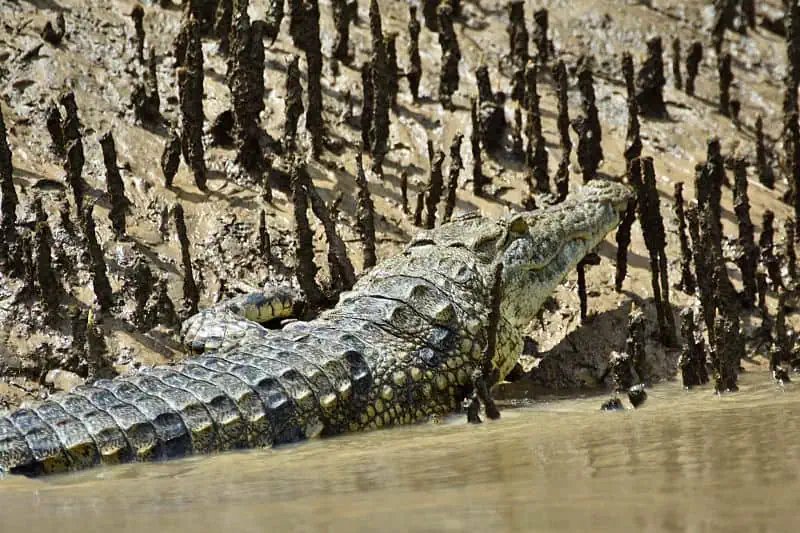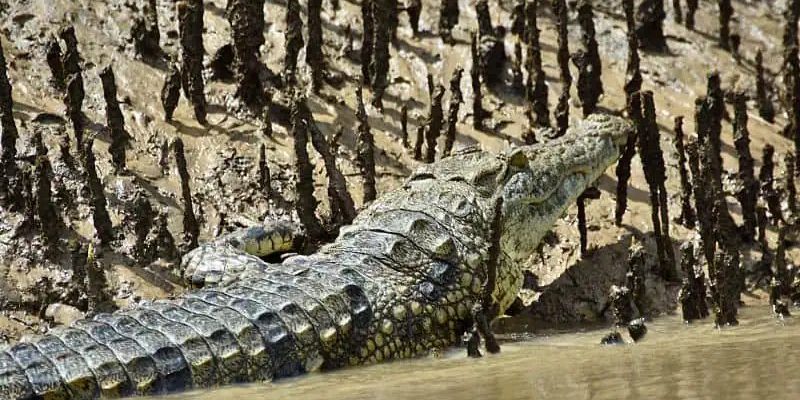
Just like how a beautiful painting can fade if not properly cared for, the Nile crocodile’s population is at risk due to human impact and environmental changes. In this article, we’ll dive deep into the status of these fascinating reptiles, exploring their conservation challenges and what efforts are being made to protect them. Think of this as a journey down the Nile, where we’re not just observing the scenery but also understanding the pressing issues that threaten these magnificent creatures.
Understanding The Nile Crocodile
The Nile crocodile (*Crocodylus niloticus*) is one of the largest freshwater reptiles in the world. They can grow up to 16 feet long and weigh over 1,600 pounds! These formidable animals are known for their powerful jaws and impressive hunting skills. They primarily live in rivers, lakes, and wetlands across Africa, making their homes in countries like Egypt, Uganda, and Botswana.
You might be wondering what makes Nile crocodiles unique. For starters, they have a powerful sense of smell, allowing them to detect prey from miles away. They use this ability along with their stealth to ambush fish, birds, and even small mammals. Their role as apex predators helps maintain the balance in their ecosystems by controlling the populations of other species.
Unfortunately, despite their impressive adaptations, Nile crocodiles face numerous threats that put their survival at risk. This brings us to the critical question: *Is the Nile crocodile endangered?*
The Conservation Status of Nile Crocodiles
The International Union for Conservation of Nature (IUCN) classifies the Nile crocodile as a species of least concern, meaning they are not currently considered endangered on a global scale. However, this classification can be misleading. While Nile crocodiles are widely distributed, certain populations are dwindling, especially in specific regions.
Overfishing, habitat loss, and poaching are significant factors contributing to population declines. As humans continue to encroach upon crocodile habitats for agriculture and development, these reptiles face an uphill battle. Their nests can be disturbed, and their food sources can become scarce, leading to lower reproduction rates.
Interestingly, Nile crocodiles have managed to adapt to some human activities. In areas where they are protected, populations can rebound quite well. The key is ensuring that conservation efforts are in place and that communities understand the importance of these reptiles to the ecosystem.
Threats to The Nile Crocodile Population
Despite their resilience, Nile crocodiles face numerous threats that could alter their future. Here are some of the most pressing challenges:
- Habitat Loss: As urban development and agriculture expand, wetlands and riverbanks are being destroyed. This means less room for crocodiles to nest and hunt.
- Poaching: Crocodiles are hunted for their skin and meat. This illegal activity can severely impact local populations, especially in regions where enforcement is weak.
- Climate Change: Changes in weather patterns can affect water levels in rivers, impacting breeding sites and prey availability.
It’s crucial to understand that these threats often intertwine. For example, as climate change leads to droughts, habitats may shrink, forcing crocodiles into closer contact with human populations, which can increase poaching incidents.
Global Conservation Efforts and Initiatives
Conservationists have recognized the importance of protecting the Nile crocodile, leading to numerous initiatives aimed at preserving their populations and habitats. Here’s a look at some of the key efforts:
- Protected Areas: Many countries have established national parks and reserves specifically to protect Nile crocodile habitats. These areas not only safeguard the crocodiles but also support countless other species.
- Community Awareness Programs: Educating local communities about the importance of Nile crocodiles can create allies in conservation. Many programs focus on promoting sustainable practices and reducing poaching.
- Research and Monitoring: Scientists conduct research to monitor crocodile populations and their habitats. This data helps conservationists make informed decisions about protection strategies.
These efforts showcase a growing recognition of the importance of preserving not just the Nile crocodile but the entire ecosystem they inhabit.
What You Can Do to Help
Feeling inspired to make a difference? There are several ways you can contribute to the conservation of Nile crocodiles:
- Educate Yourself and Others: Learn more about Nile crocodiles and share that knowledge with friends and family. The more people know, the greater the potential for change.
- Support Conservation Organizations: Consider donating to or volunteering with organizations focused on wildlife conservation in Africa.
- Practice Eco-Friendly Habits: Reducing pollution and being mindful of your environmental impact can help protect habitats around the world.
Every little action counts. By spreading awareness and supporting conservation efforts, you can play a role in ensuring that future generations will be able to marvel at the Nile crocodile in its natural habitat.
While Nile crocodiles are not classified as endangered globally, their future is still uncertain. Local populations are threatened by various factors, including habitat loss and poaching. It’s crucial for us to stay informed and advocate for their protection.
By understanding the challenges Nile crocodiles face and supporting conservation initiatives, we can help ensure that these magnificent reptiles continue to thrive in the wild. Honestly, it’s all about striking a balance between human needs and the needs of wildlife. After all, we share this planet, and the health of our ecosystems depends on preserving all its inhabitants, including the iconic Nile crocodile.

